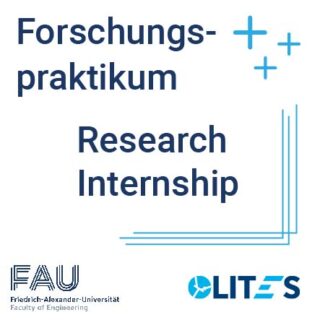(FP/ MA) Growth trajectories of superparamagnetic nanoparticles(SPIONs): From single iron core to chain-like agglomeration
This work is very suitable as FP. Also possible topics for MA have been marked separately.
Description
Superparamagnetic iron-oxide nanoparticles (SPIONs), composed of a magnetic iron-oxide core and a tunable non-magnetic coating, exhibit rapid magnetic response along with exceptional stability and biocompatibility [1], [2]. These characteristics have fostered their applications in diverse medical fields including drug delivery [3], diagnostic imaging [4], and hyperthermia therapy [5].
The characteristics of nanoparticles are closely related to their structure. Their structure is well layered. Crystals, iron oxide nuclei, aggregates, clusters and agglomeration are gradually formed as the scale increases. The formation of these different hierarchical structures determines the macroscopic properties of the final nanoparticle.
Research Questions
- What are the key factors that determine the formation of the corresponding structures at different scales?
- What are the length scales of the different levels of structure? How is this length scale affected?
- What are the specific mechanisms by which structures between different scales are transformed?
Research Goals
Our aim is to clearly explain the structural composition of magnetic nanoparticles across hierarchical levels and their corresponding length scales (FP, MA).
As well as to quantitatively study and visualize the nanoparticle structural composition using molecular dynamics simulations (MA).
Arbeitspakete
- Literature research on synthesis methods of magnetic nanoparticles, nanoparticle interactions, and structural hierarchy (FP, MA)
- Rational visualization of the structural hierarchy of magnetic nanoparticles (FP, MA)
- Perform molecular dynamics simulations to model the formation of hierarchical structures (MA)
We would very much welcome your questions and comments and will modify the topic accordingly to suit your interests.
Deine Kenntnisse
- Strong interest in medical technology
- Good information gathering skills
- Solid knowledge of physics and math
- Proficiency in Python and matlab
Literaturangaben
- S. Laurent, D. Forge, M. Port, A. Roch, C. Robic, L. Vander Elst,and R. N. Muller, “Magnetic iron oxide nanoparticles: synthesis, stabilization, vectorization, physicochemical characterizations, and biological applications,” Chemical Reviews, vol. 108, no. 6, pp. 2064–2110, 2008.
- M. Wu, D. Zhang, Y. Zeng, L. Wu, X. Liu, and J. Liu, “Nanocluster ofsuperparamagnetic iron oxide nanoparticles coated with poly (dopamine) for magnetic field-targeting, highly sensitive MRI and photothermal cancer therapy,” Nanotechnology, vol. 26, no. 11, p. 115102, 2015.
- A. S. Thalmayer, S. Zeising, G. Fischer, and J. Kirchner, “Steeringmagnetic nanoparticles by utilizing an adjustable linear Halbach array,” in 2021 Kleinheubach Conference, pp. 1–4, Miltenberg, 2021.
- H. Unterweger, L. Dezsi, J. Matuszak, C. Janko, M. Poettler, J. Jordan, ´ T. Bauerle, J. Szebeni, T. Fey, A. R. Boccaccini, ¨ et al., “Dextrancoated superparamagnetic iron oxide nanoparticles for magnetic resonance imaging: Evaluation of size-dependent imaging properties, storage stability and safety,” International Journal of Nanomedicine, pp. 1899– 1915, 2018.
- A. Hajalilou, L. Ferreira, M. M. Jorge, C. Reis, and M. Cruz, “Superparamagnetic Ag-Fe3O4 composites nanoparticles for magnetic fluid hyperthermia,” Journal of Magnetism and Magnetic Materials, vol. 537, p. 168242, 2021

